Searching for wildlife in the jungle
can sometimes feel like an exercise in futility. You're guaranteed to
hear all kinds of critters scampering about, flying around, buzzing
incessantly or lunging from tree to tree. But a lot of the time, you
don't see jack. Sure, you hear it, but when has it ever been cooler
to hear a kingfisher instead of seeing one.
 |
| Look atta that! Incredible to actually see a Tarsier up close and personal. This is a Spectral Tarsier (Tarsius spectrum), one of the smallest primates on Earth. This one is probably about 12-14cm. *** All photos can be enlarged by clicking on them.*** |
Alli and I have been skunked in the
jungle more times than I can recall. Of course, some of it has to do
with the fact we both honed our creature spotting skills in the
Sonoran desert, a landscape and ecosystem worlds away from the SE
Asian jungles we've been moseying though over the last year. Deserts
are vast, panoramic; jungles ooze claustrophobia. Plants and trees
grow every which way, blocking out sunshine. You can hike for hours,
never once having the sun splash your face.
 |
| One of at least 70 Sulawesi Crested Black Macaques (Macaca nigra) we saw in the troop. These monkeys, some of which have haircuts circa CBGBs in the late 1970s, are critically endangered. They're holding on in Tangkoko, the only solid patch of ground they got left. |
In Dec. 2012
we spent 10 days in Gunung Mulu National Park in Sarawak, Malaysia
(
click here to read more about that trip). Half the nights there I
ventured out solo to various areas on the prowl for nocturnal
reptiles. My bounty? One night I found a gecko. That's like seeing a
whiptail lizard in Arizona, deer somewhere in Maryland or
encountering a bearded weirdo on
Colfax
Avenue in Denver. Everyday we were in the forest, but my
critter count was on the low-low.
 |
I love the sight of a pit viper early in the morning. This splendid Bornean Keeled Green Pit Viper (Trimeresurus subannulatus) was wrapped and perched on a meal, waiting for some breakfast to pass on by I think. Quite the pose I'd say.
|
Numerous times on Pulau Tioman I went
searching. At night often times the only fauna I reckon I saw were
the insects duking it out for the light emanating from my headlamp.
In Flores, Indonesia, I heard all types of noise rumbling about in
the leaf-litter, but my eyes never could connect. And so it goes.
Like I said, the jungle can easily make you feel like an amateur.
Enter Tangkoko Nature Reserve, on the
other end of the spectrum I've described above. Situated at the tip
of northern Sulawesi, Indonesia, this park bestowed upon the Lady and
I the most jungle wildlife we've ever seen in a day. Pure
exhilaration. That it's known as an easy locale to spot critters
helps. And when you have a crack guide, then your chances of getting
skunked yet again nose dives. I think I've delayed divulging the
'loco fauna' enough. Here goes: tarsiers, Bear cuscus, endemic Black
macaques and kingfishers, three species of snakes, hornbills, an owl
family and a resplendent roster of birds: malkoas, mynas, woodpeckers
and more. If you could care less about what I say for the rest of
this post, at least peep our photos (also pretty amateur, but we try).
These Tangkoko creatures are more than worth an eyeball scan or two.
 |
| The gang's all here, with the youngster on the end. This is a Ochre-bellied Boobook, or Hawk Owl (Ninox ochracea), one of Sulawesi's many endemic birds. |
Our day
started early, a smidge after 6am. We met Iwan, our guide for the day
at our homestay across from the park's entrance. As our coffee cooled
down, we pulled up our socks, tucked our pant legs into them and then
applied an unhealthy amount of DEET infused bug juice to all surfaces
from our lower legs on down. The quantity of DEET we sprayed is
probably illegal in California. We did this to ward off a pesky bug,
locally called 'gonones,' known to nibble on your feet and leave you
scratching that
area
like it's the chicken pox. I didn't fumigate enough. A
few days later my feet were yelling at my brain to scratch like a
lunatic.
 |
| That guy needs some help maneuvering those roots. |
Walking into the early morning forest
was a breeze, as the
sweltering
Sulawesi sun hadn't got too up in the sky yet. No hills, or
ups and downs, just flat. Pretty soon after arriving into the
reserve, Iwan said we'll go drop in on a pit viper he recently found.
Excellent I muttered. We already had taken a liking to Iwan. He's
from Batu Putih (White Rock in English), the town we stayed in that
abuts the reserve. He works on the Black macaque research project in
the park, documenting the species' natural history and following
around the young-ins in each respective troop to discern what they
can.
 |
| One tarsier inside the large fig trees they usually call home. If you wanna see more of these bizarre creatures just scroll down below. |
It was obvious from the get-go Iwan
knew his local, Indonesian and global ecology and zoology. He was
listing off bird species as they called, while dishing out
interesting morsels of info on Black macaques, and resident snake
species (after my insistent prodding). He was hands-down the most
knowledgeable guide we've had in SE Asia. He took us on a whirlwind
tour of the local fauna that day and afterwards there was no
questioning his self-proclaimed 'eagle eyes.' Instead of myself just
babbling on in chronological style, I'm-a-finish here. Just enjoy the
photos of one of the only days where the jungle actually cooperated
and the highlight wasn't just a kingfisher call. And if you find
yourself in northern Sulawesi
click here to contact Iwan.
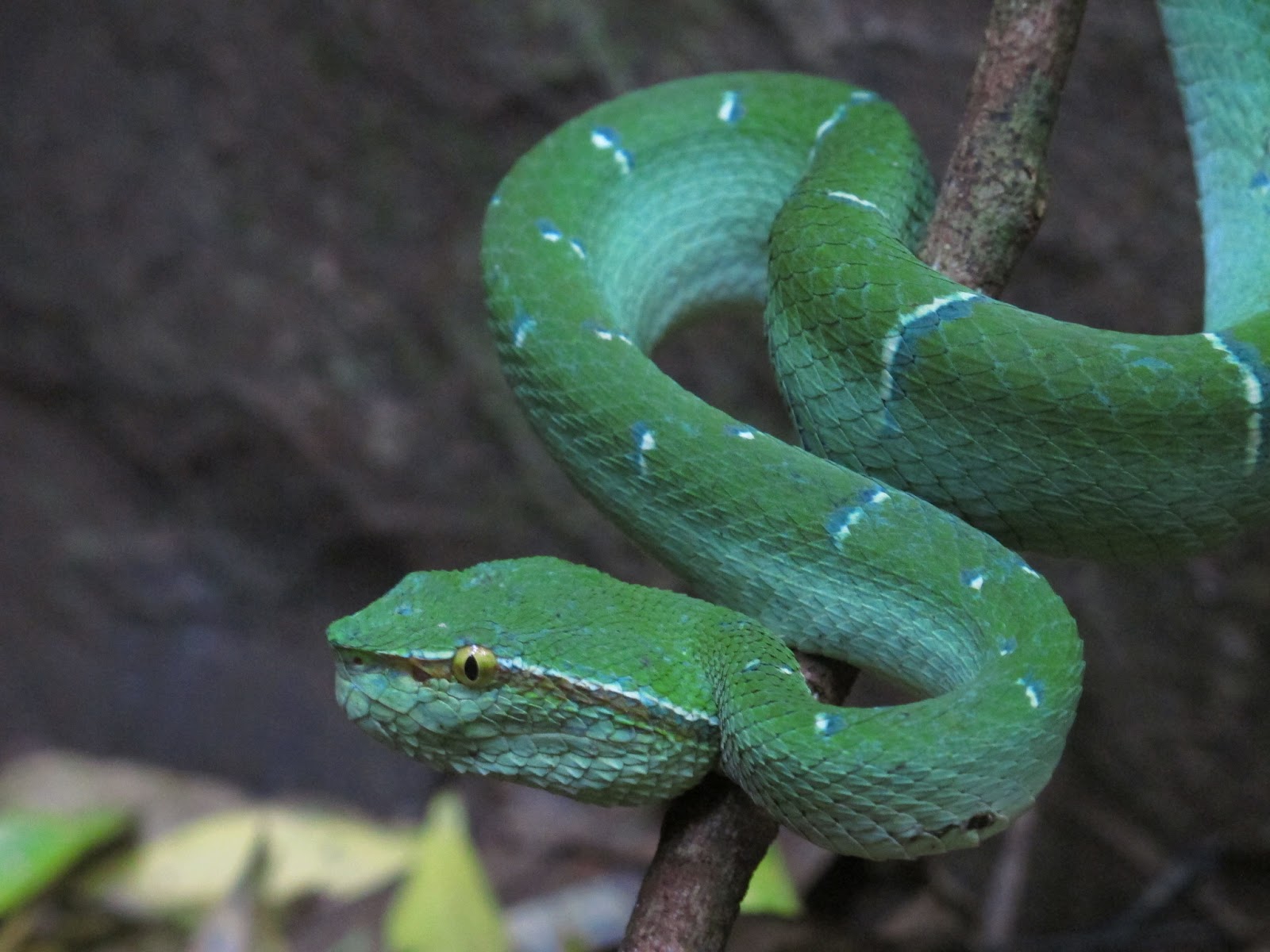 |
| Facin' with the morning pit viper. I love the blue and white lines. |
 |
| All throughout the troop various Black macaques duos were grooming each other. |
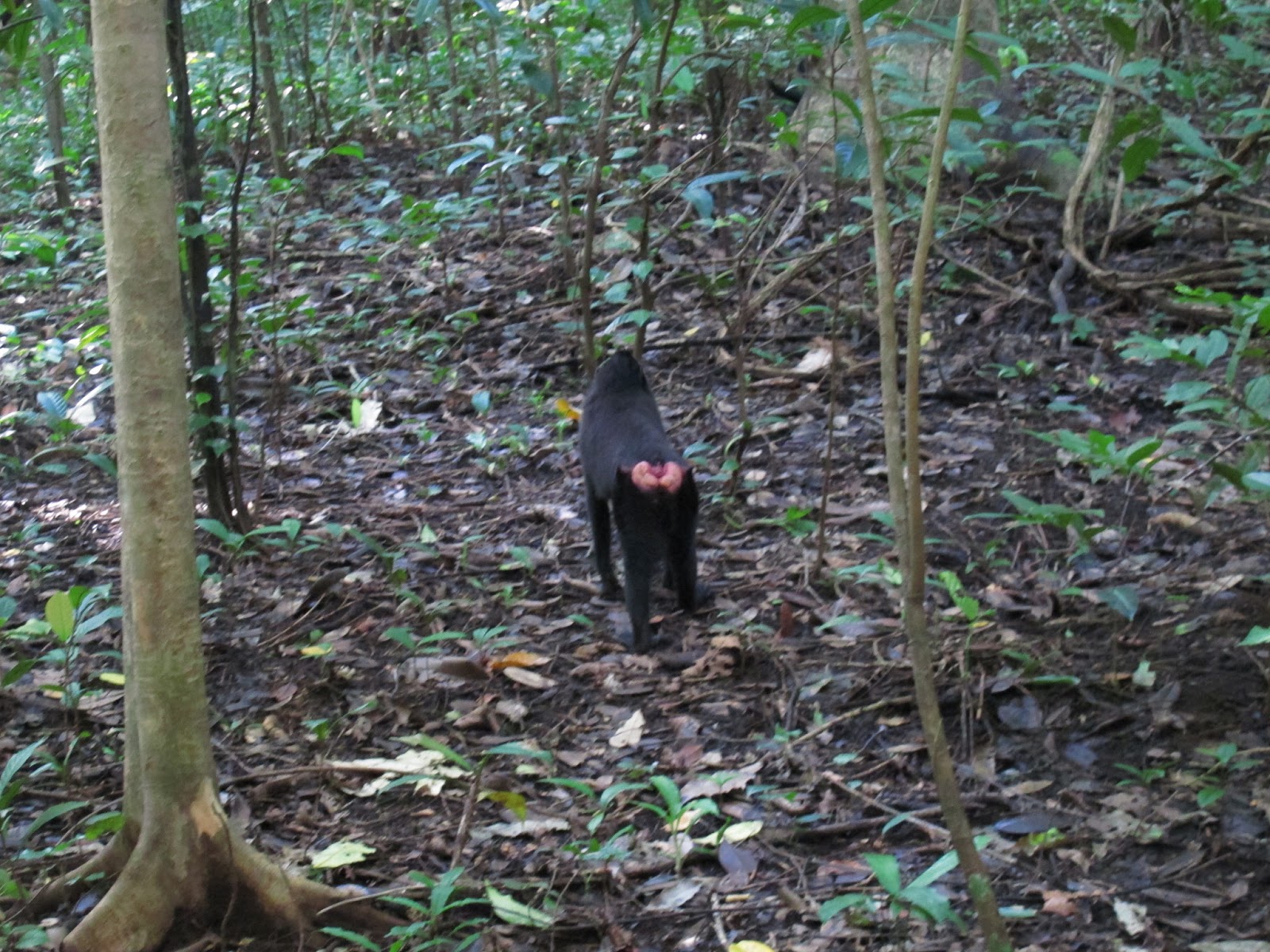 |
| I'm not a mammalogist, but I think this female is ready to mate. |
 |
| Uhhhhh... yeah, something's in the trees. |
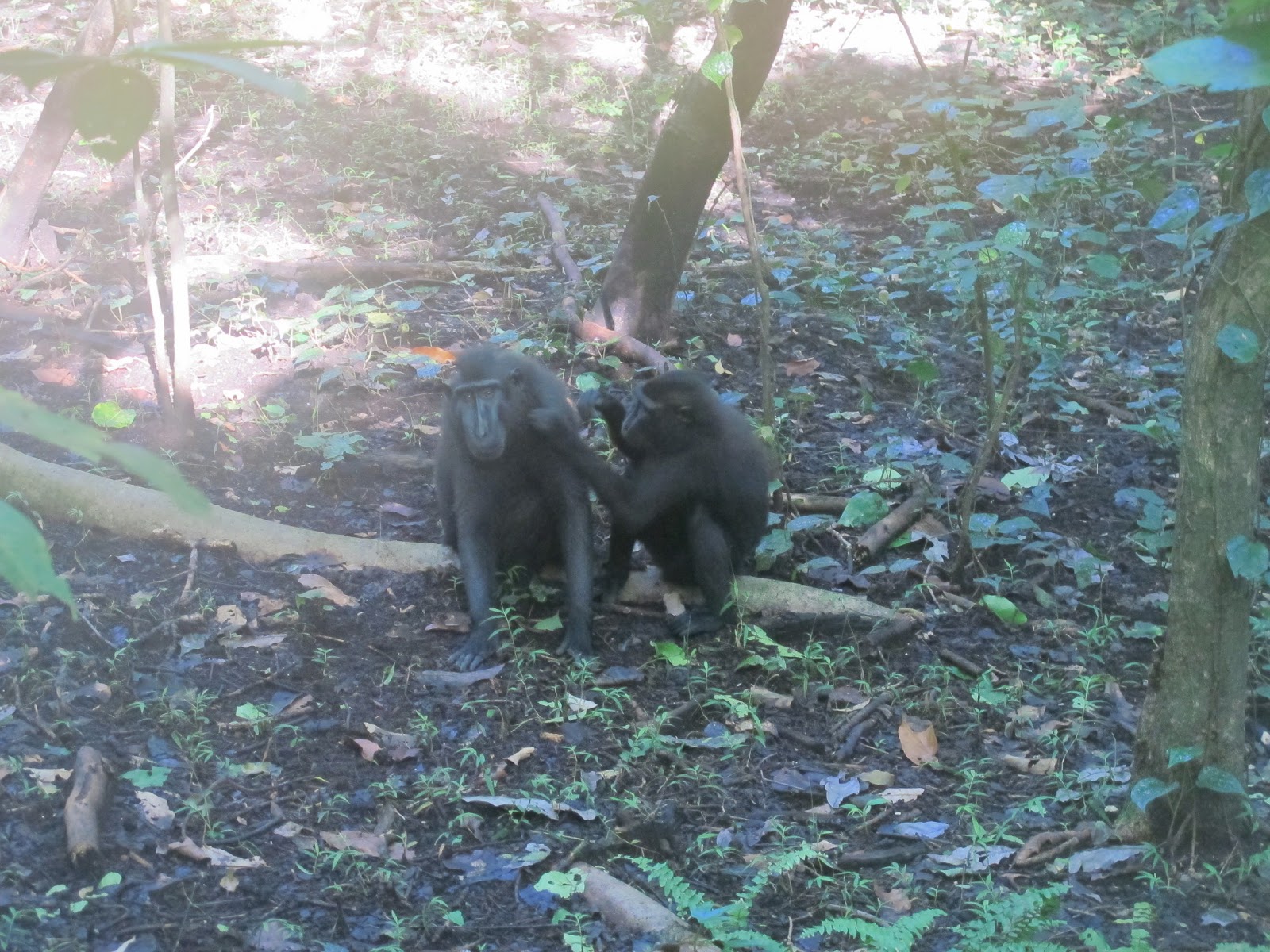 |
| More grooming - it was amazing how close we could get to these monkeys. |
 |
| Black macaques are critically endangered for all the typical reasons: habitat loss, human encroachment (living and agriculture) and over-hunting. |
 |
| Like I said earlier, they got some pretty punk rock-ish hair-do's. |
 |
| It's also interesting because while they're arboreal they have wee nubbin tails, just a few centimeters long. |
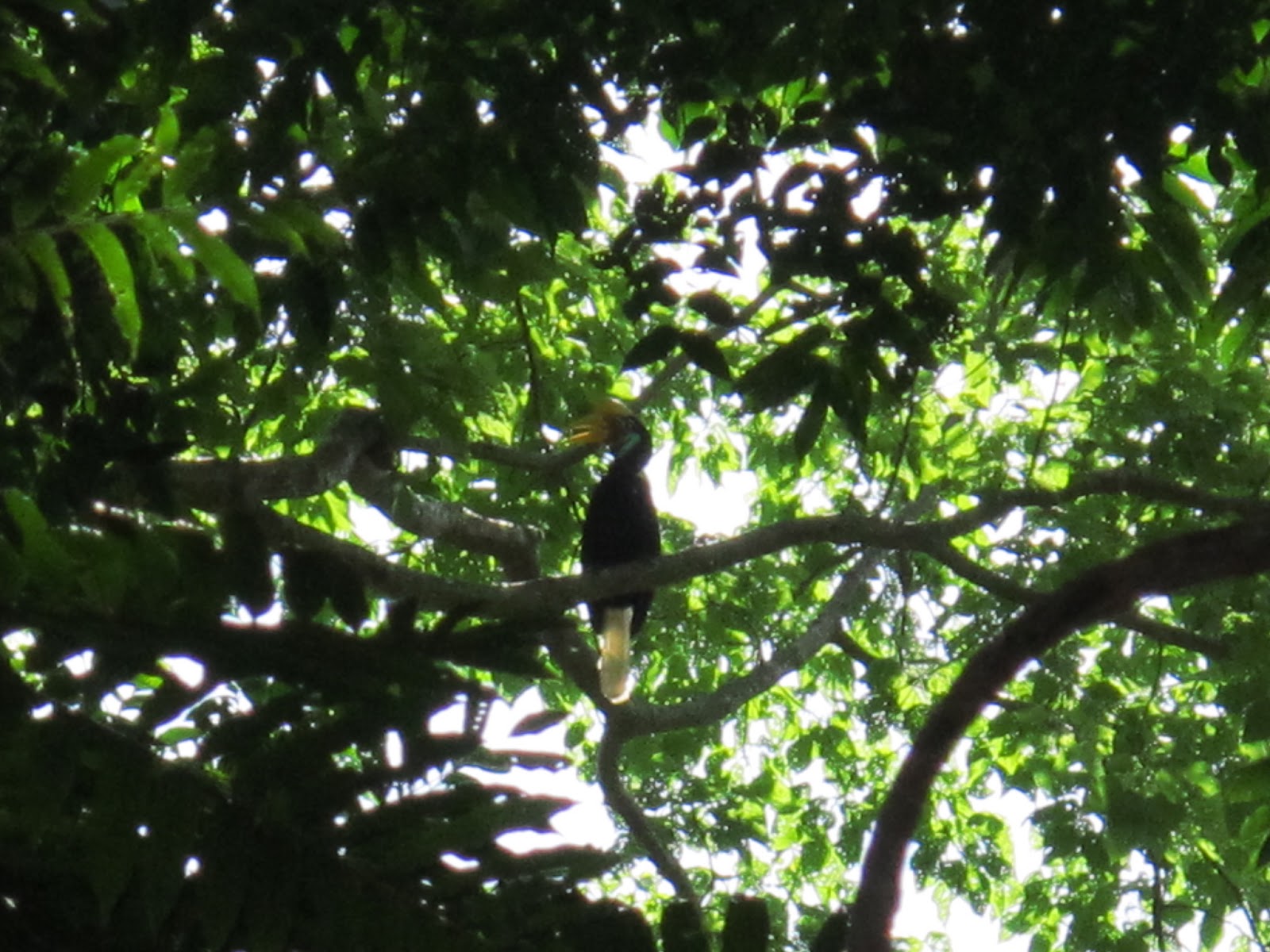 |
| We saw an endemic Knobbed Hornbill (Aceros cassidix) and all we have to show you are these two crappy photos! Basically they just prove we saw a hornbill, which is always a rollicking time. |
 |
| This female hung out forever. Our necks hurt from scoping her through binoculars for so long. We were lucky on that front. |
 |
| Third snake of the day (the second was an un-photograph-able Brown ratsnake way up in the trees) and spotted meandering about on top of leaf litter right after we left the hornbill. I love the laffy taffy green contrasting with the dead brown leaves. |
 |
| The Red-tailed Racer (Gonyosoma oxycephalum) didn't stay curled up for long. This wide ranging snake found all over SE Asia hit the ground and disappeared quick into a hole in the ground. |
 |
| Being a little kid in a tree. |
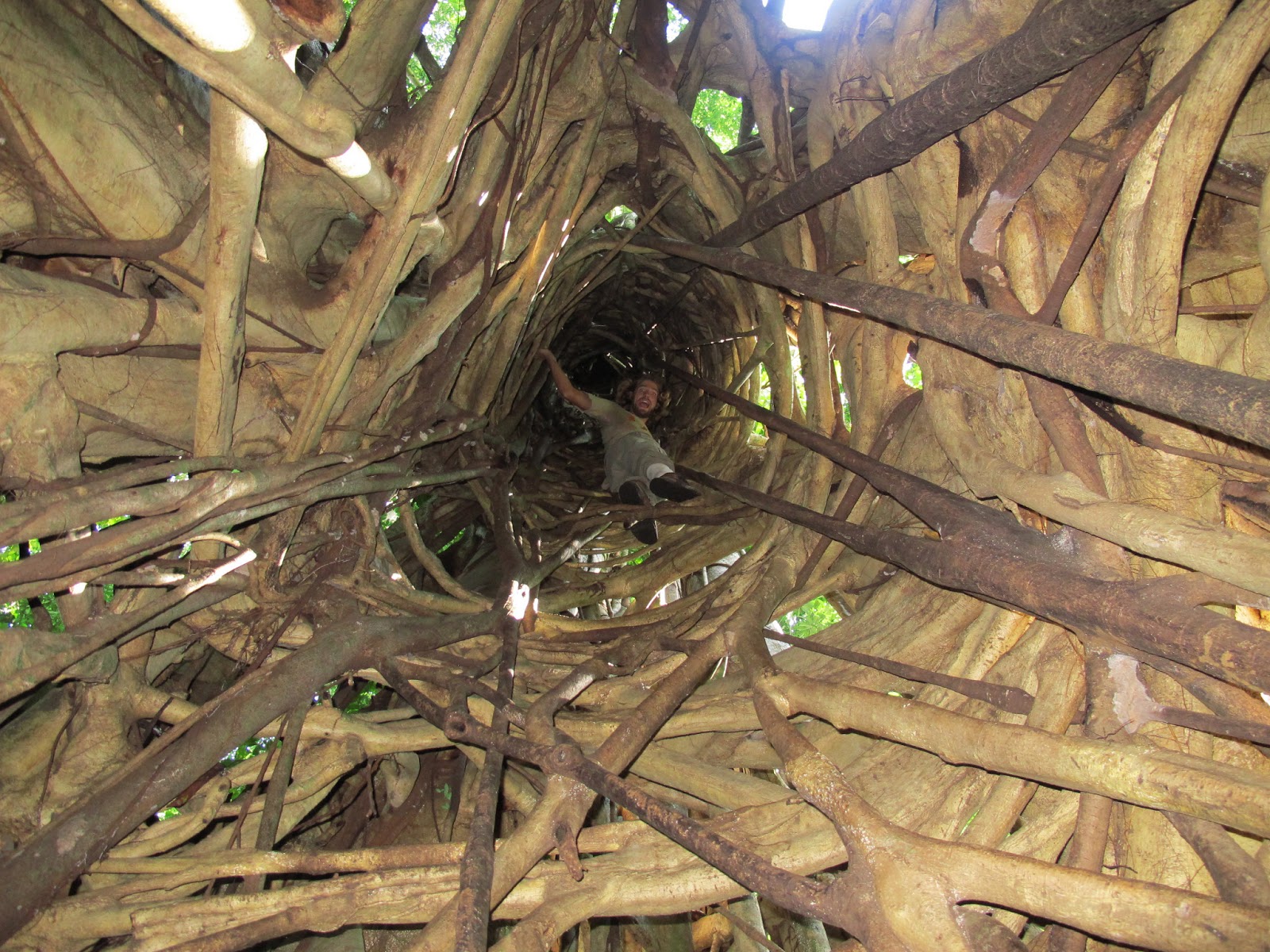 |
| Luckily I didn't fall down from inside. That would have ruined our Nepal trip. |
 |
| Dang! Look at that old man descend those roots in style. |
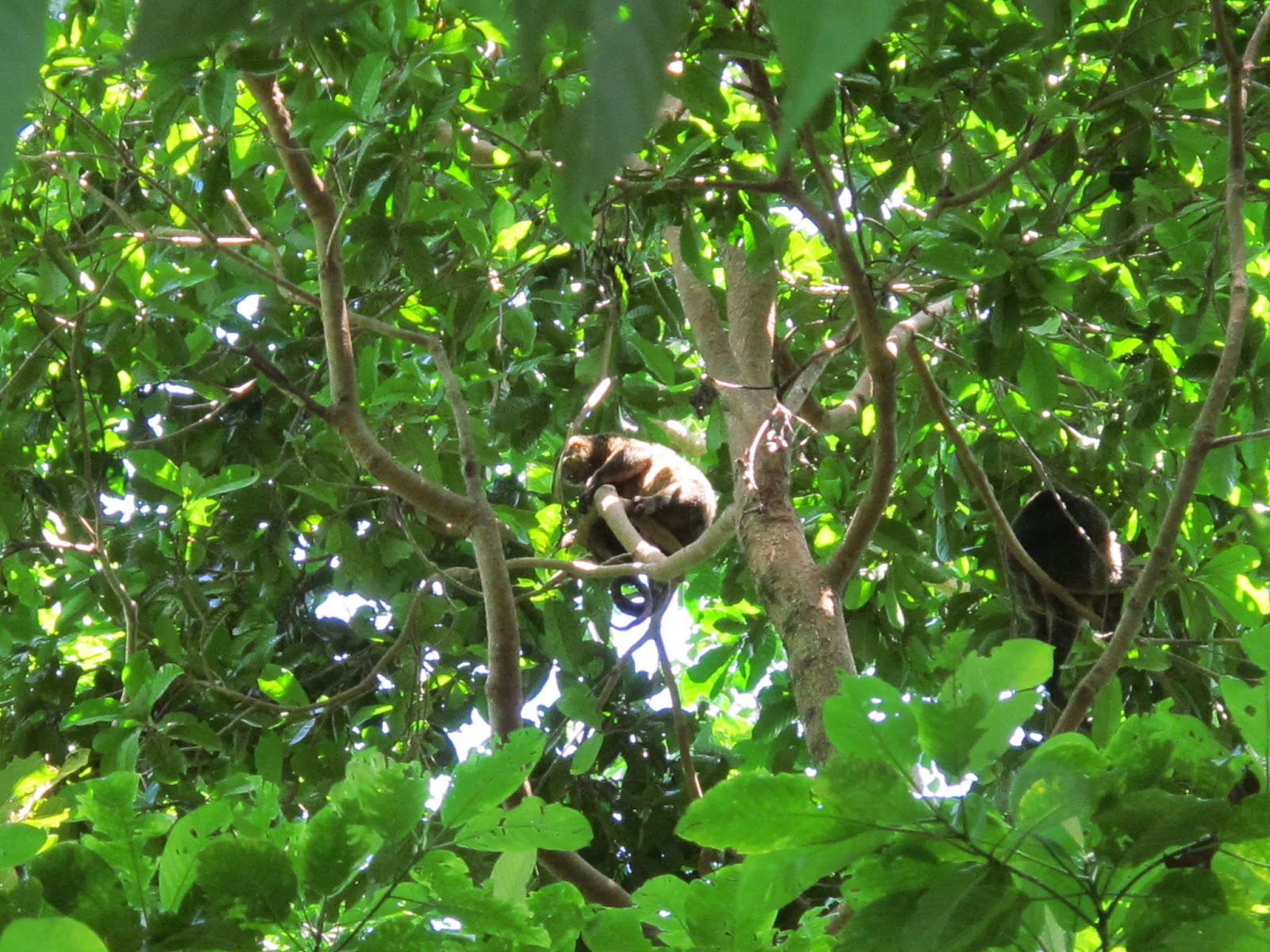 |
| Another sweet endemic! The only decent photo we got of Bear cuscus, an arboreal marsupial. Sulawesi truly has some unique fauna and this one is a lovely example. Marsupials are usually found in the New Guinea countries and Australia, but since Sulawesi is a strange transition island (its directly east of Wallace's Line) all kinds of kooky stuff shows up. | | |
|
 |
| Getting my post-lunch siesta on. |
 |
| The owl family close up. They barely budged the entire time we were there. |
 |
| First look at the Spectral Tarsier! This is an animal that you could say was on both of our bucket lists. |
 |
| Nervously looking down upon our arrival. |
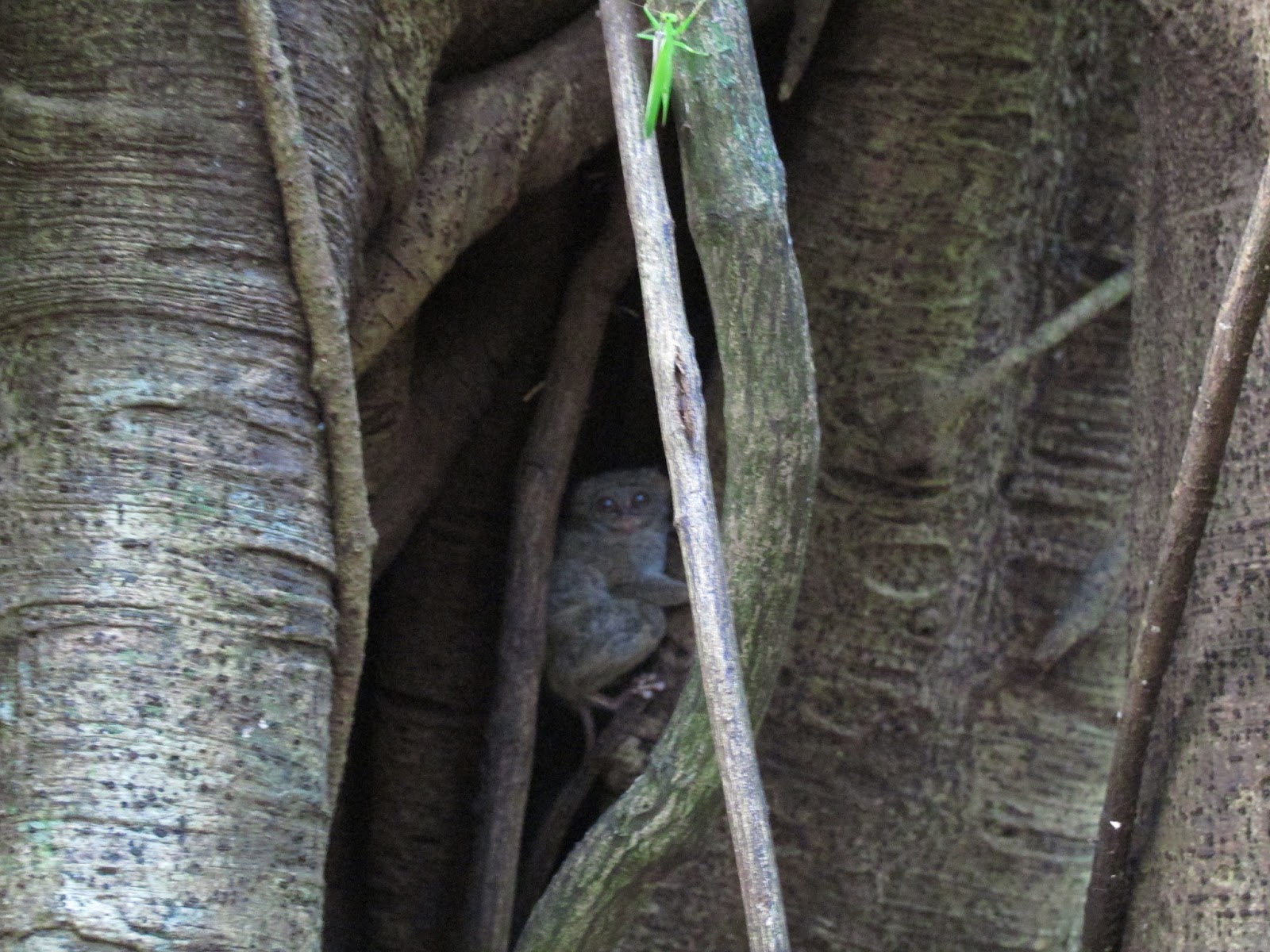 |
| Iwan might have tossed out just a few grasshoppers so the tarsiers would come down and say what up. I usually don't condone this, but, c'mon, it was glorious. I hope PETA doesn't get wind of this and go after Iwan. |
 |
| Looking up and away for the moment. |
 |
| This and the following 4 photos are my favorite procession of the day. |
 |
| There is no questioning these are some weird creatures. They live in large trees in small social groups emerging an hour or a few more, before dusk. They then proceed to head out, jumping around and looking for insects and, occasionally, lizards to eat. |
 |
| Show me those Will Smith ears! Which, along with their huge eyes, are potent weapons and very useful for a lifetime given to nocturnal hunting. |
 |
| What's that? You wanna know more, here ya are: while their bulging marble-esque eyes are set in place they can rotate their heads 180 degrees enabling them to see all types of tasty future meals. |
 |
| Check out the human-like hands and feet. |
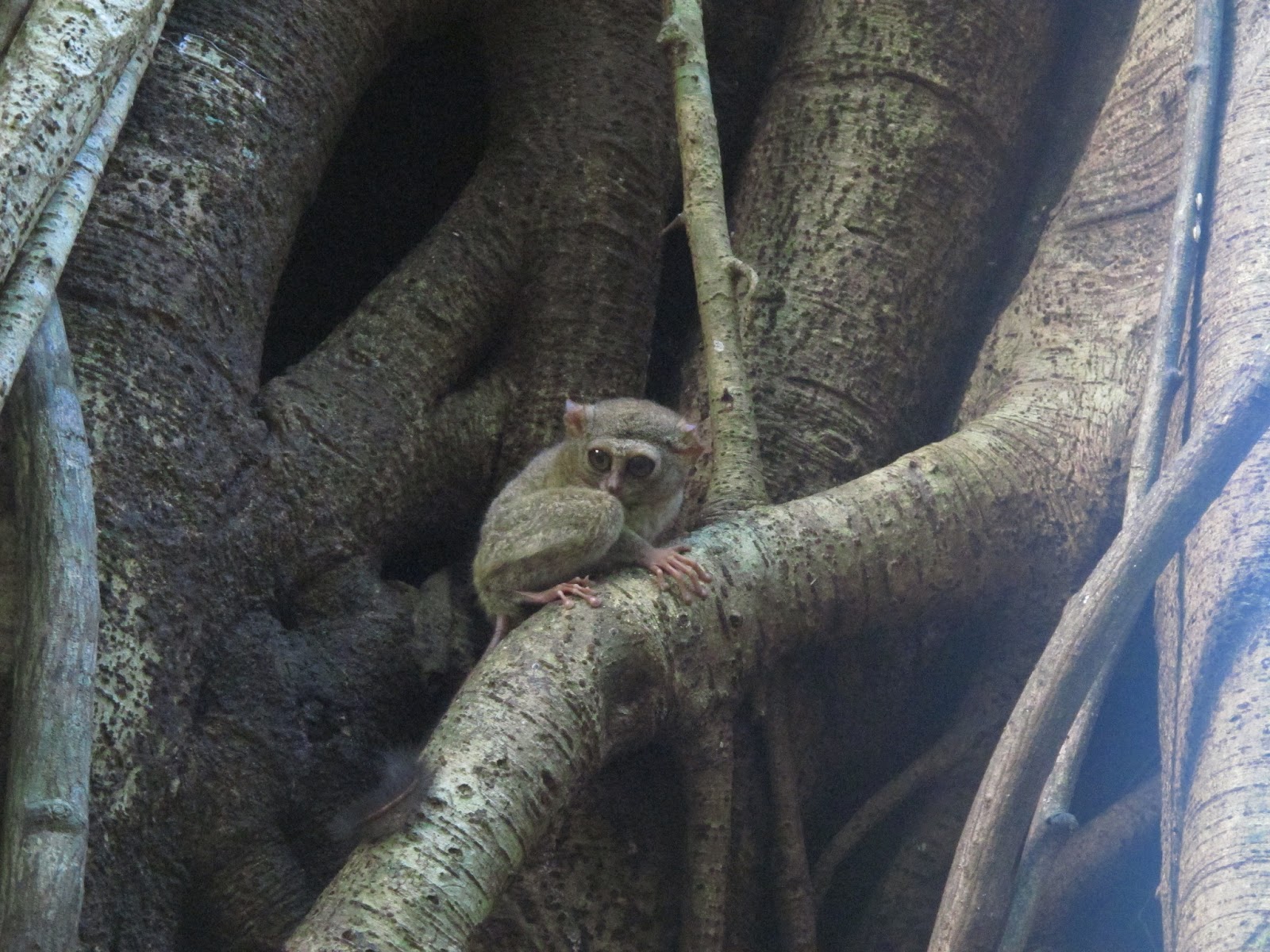 |
| Tarsiers can also jump up to 6 meters (almost 20 feet). |
 |
| Putting on a show for us. There were at least 5-7 individuals in this tree. |
 |
| The cherry on top: about halfway through our time hanging out at this tree a small juvenile popped out. This tiny thing, maybe 4cm tall, was about two weeks old. That thing cray. |
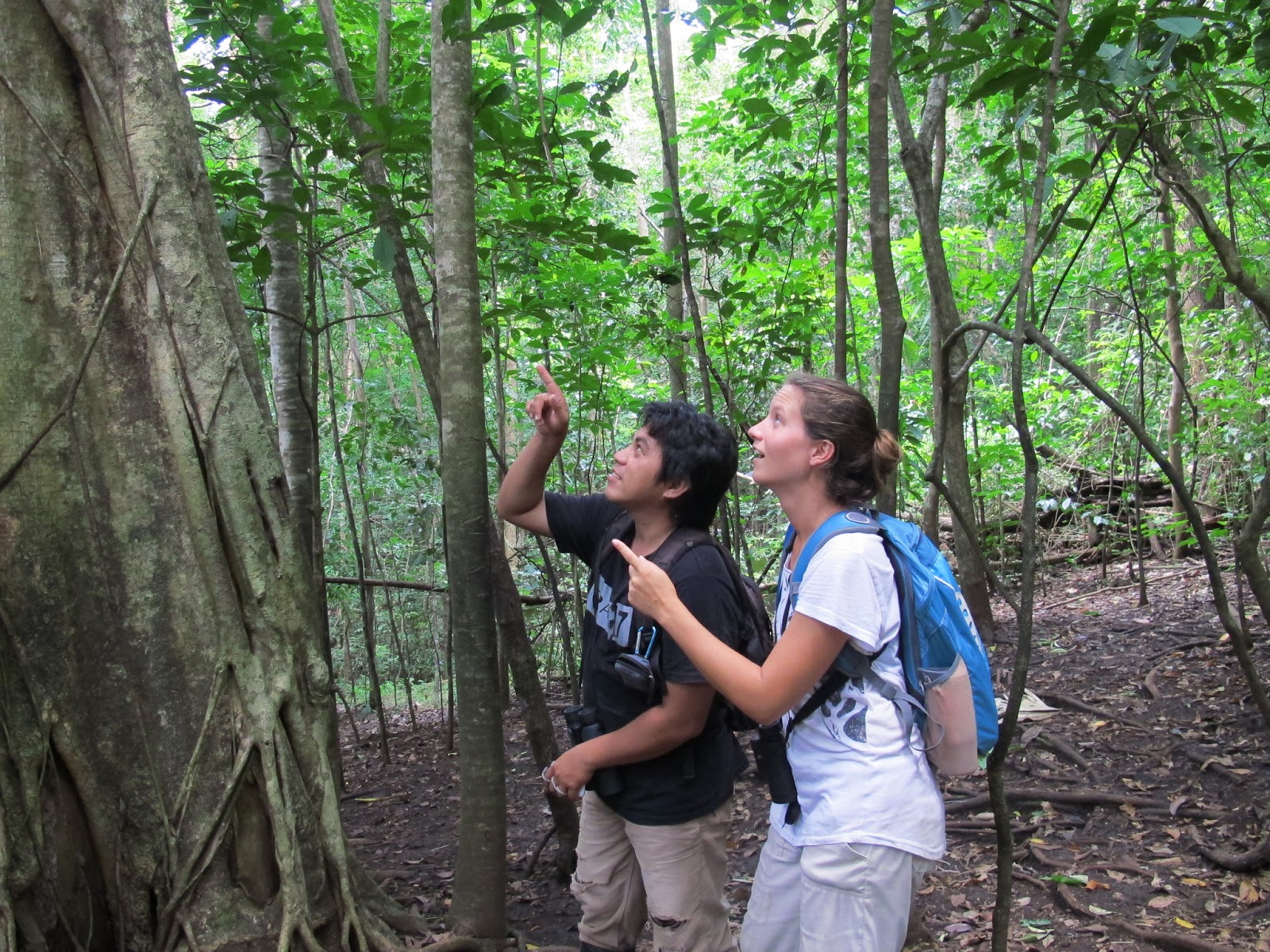 |
| Iwan and Alli geeking out over some tarsiers. Hamin' it up. |
 |
| The gorgeous and rolling black sand beaches of Batu Putih. |

